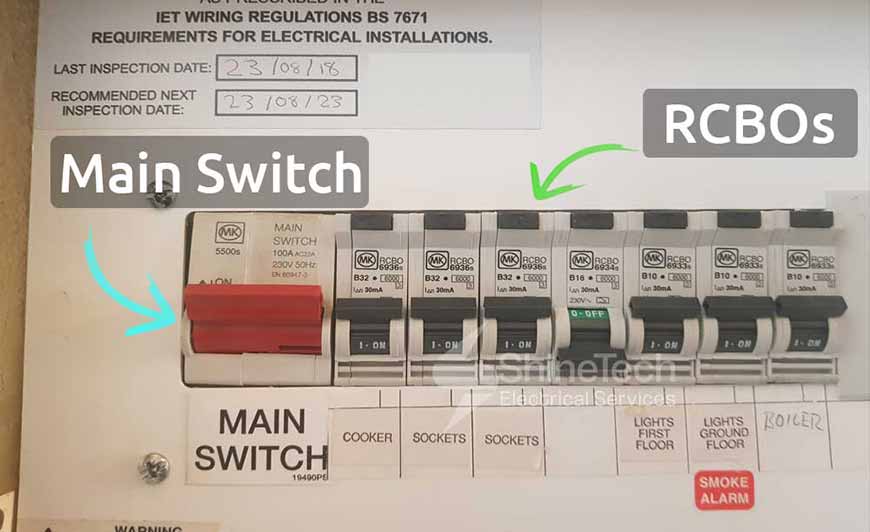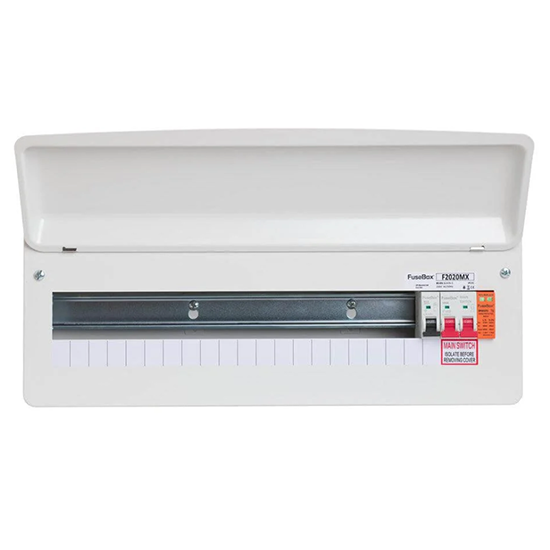Comprehending the Benefits of RCBO CONSUMER UNITS for Modern Residences
Comprehending the Benefits of RCBO CONSUMER UNITS for Modern Residences
Blog Article
Just How to Select the Right Customer Units for Your Electrical Requirements
Selecting the right customer unit for your electrical needs is a critical job that calls for careful preparation and understanding of different aspects. Integrating features such as Residual Current Tools (RCDs) and Miniature Circuit Breakers (MCBs) can use improved defense versus electrical faults. Exactly how do these elements interaction to determine the most suitable consumer system for you?
Sorts Of Customer Units
When thinking about electric installations, it is critical to understand the different sorts of consumer devices available on the marketplace. Customer systems, additionally referred to as fuse boxes, act as the central hub for electrical distribution within a residential or commercial property. They are available in a number of kinds, each matched for various applications and compliance requirements.
One typical kind is the Main Change Consumer Device, which includes a main button to cut off electric supply and several circuit breakers. This unit gives basic security and is generally made use of in tiny to medium-sized residential or commercial properties. One more type is the High Stability Customer Unit, which features multiple neutral bars and enables for a mix of both RCBO (Residual Current Breaker with Overcurrent) and MCB (Miniature Circuit Breaker) configurations, supplying enhanced security and versatility.
Split Tons Customer Systems include two or even more recurring current gadgets (RCDs), allowing circuits to be divided right into various sections, thereby improving mistake detection and seclusion. Twin RCD Consumer Devices are likewise prevalent, providing an added layer of security by splitting the circuits between 2 RCDs. Lastly, there are Completely Protected Customer Systems, designed for severe or exterior atmospheres, offering additional sturdiness and weather resistance.
Choosing the appropriate customer unit is vital for making sure electrical safety and compliance with governing criteria.
Secret Components
Comprehending the crucial parts of a customer unit is basic to ensuring its optimum efficiency and safety. At the heart of any type of customer unit lies the main button, which acts as the main control device for isolating the electric supply. This switch is important for maintenance and emergency situation scenarios, providing an uncomplicated means to cut off power.
One more indispensable element is the Residual Current Device (RCD) The RCD is created to safeguard versus electric shocks and potential fire risks by monitoring the present equilibrium in between neutral and live wires. When an inequality is found, the RCD promptly disconnects the circuit, mitigating the risk of harm.
Circuit breakers, typically categorized as Miniature Circuit Breakers (MCBs) and, in many cases, Residual Current Circuit Breakers with Overcurrent defense (RCBOs), are similarly vital. MCBs secure specific circuits from overloads and brief circuits, while RCBOs use mixed capability of RCD and MCB, giving both planet mistake and overcurrent defense.
Busbars, usually forgot, are critical as they distribute electrical power to different circuits within the system. These copper strips ensure a stable and efficient transfer of electrical power, contributing to the overall dependability of the system. Comprehending these essential elements is necessary for picking a customer system that meets your electrical requirements effectively.

Tons Capacity
Exactly how do you determine the ideal tons capability for a consumer device? Evaluating the load ability is critical to make sure that the consumer unit can handle the electric needs of your building without overwhelming.
Next, transform this overall wattage right into amperes making use of the formula: Amperes = Watts/ Volts - RCBO CONSUMER UNITS. In a standard 240V system, if the total wattage is 4800W, the tons would be 20A (4800W/ 240V) It is a good idea to choose a customer device with a greater capacity than the calculated lots to accommodate future developments and ensure reliability
Furthermore, take into consideration the circulation of the load throughout different circuits, guaranteeing that no solitary circuit is overloaded. A well balanced lots distribution enhances the effectiveness and longevity of the electric system. Consulting with a qualified electrician can assist and offer added insights in selecting a consumer device that meets your particular needs.
Safety Features
Ensuring the consumer system is outfitted with the appropriate tons capacity is only one element of a dependable electric system; just as essential are the safety and security features incorporated into the unit. MCBs, on the various other hand, secure the system by immediately changing off the electrical circuit during an overload or brief circuit, thus safeguarding both the circuitry and connected tools.
Another critical safety attribute is the Rise Protection Gadget (SPD) SPDs safeguard electric setups from voltage spikes triggered by lightning strikes or power surges, consequently stopping damage to delicate click to read more electronic devices. Furthermore, consumer systems must have clear labeling and insulation barriers to decrease the threat of unintentional call with live components during maintenance or inspection.
Last but not least, modern customer devices commonly come with arc fault discovery devices (AFDDs), which determine and mitigate arc mistakes that could bring about fires. Integrating these safety features guarantees a durable, reputable, and safe and secure electrical system, using satisfaction to users and compliance with safety and security standards.
Regulative Conformity
Browsing the landscape of regulatory conformity is crucial for selecting a consumer device that meets both global and national standards. Adherence to these requirements not only guarantees security however likewise guarantees compatibility and integrity. Conformity with policies such as the International Electrotechnical Commission (IEC) requirements, and local requirements like the British Specifications (BS) for the UK or the National Electrical Code (NEC) for the United States, is non-negotiable.

Furthermore, guarantee that the customer device sticks to RoHS (Limitation of Hazardous Materials) instructions, which restrict making use of certain unsafe materials in electrical and electronic devices. This not just adds to ecological sustainability but also enhances the security profile of the gadget.
Final Thought
Choosing the proper consumer system necessitates complete analysis of the home's size, load capacity, and certain safety and security needs. Consulting a qualified electrician can offer vital assistance, guaranteeing the selected customer system satisfies all safety and security and useful demands efficiently.
Choosing try this site the right consumer device for your electric requirements is an essential job that calls for careful planning and understanding of various elements.One common kind is the Key Switch Customer Device, which includes a main switch to cut off electric supply and numerous circuit breakers. Understanding these vital parts is crucial for selecting a customer system that meets your electrical demands properly.
Analyzing the load capability is crucial to guarantee that the customer unit can deal with the electric needs you could check here of your property without overloading. RCBO CONSUMER UNITS.Making certain the consumer unit is geared up with the proper load capacity is only one facet of a trustworthy electrical system; similarly vital are the safety and security features integrated right into the unit
Report this page